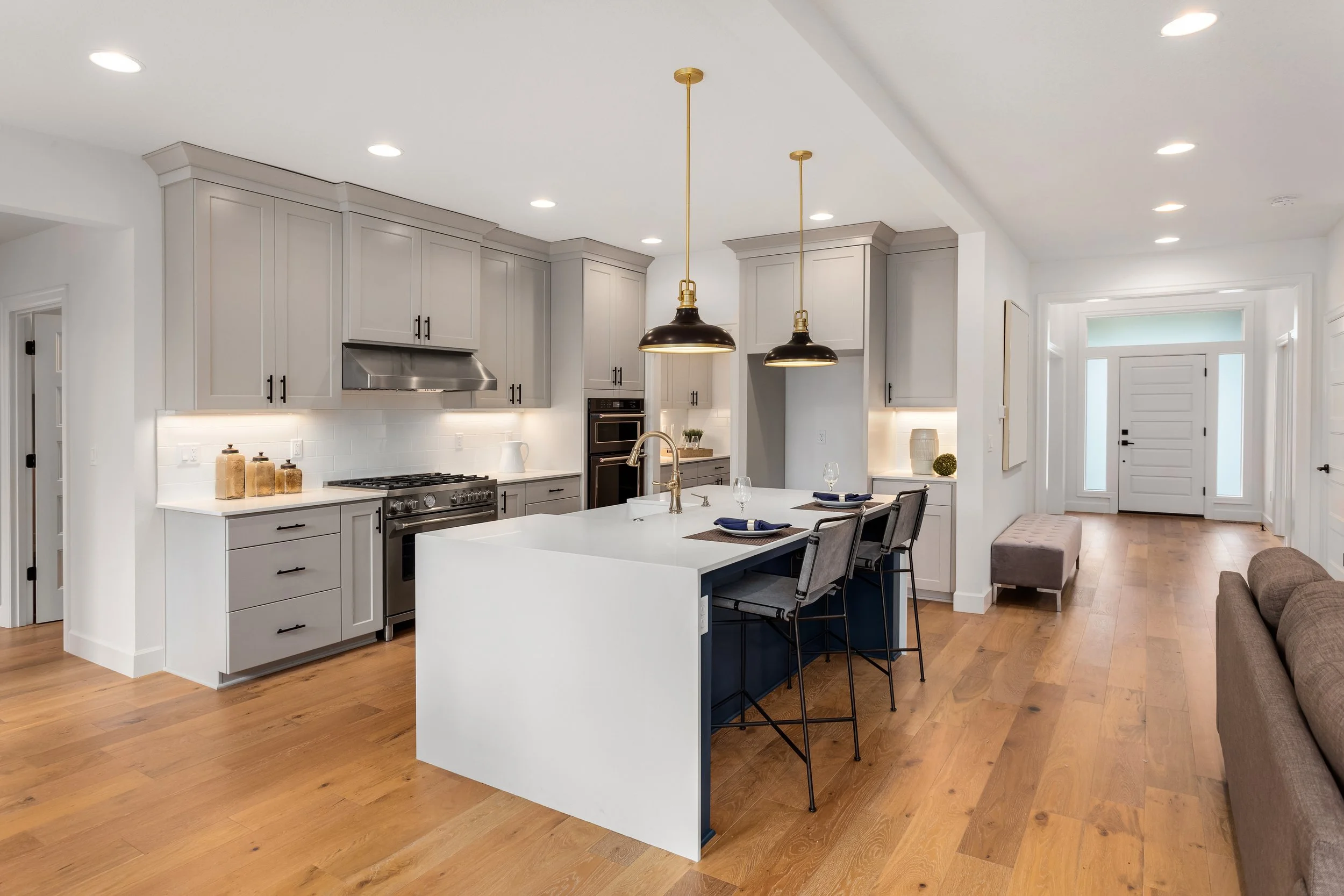A custom home means greater control over your living space. However, living that dream requires thorough preparation.
The costs associated with building a custom home stack up. To stick to a budget, it’s essential to avoid expensive mistakes by following a set of best practices.
Fortunately, these actionable strategies help you save throughout the process. From design to implementation, follow these practices to build a custom home on a budget.
1. Do your research
First and foremost, building a custom home requires research. You’ll need to draw up a budget based on the most relevant data you have access to. This means exploring the market for materials, land, types of homes, lot sizes, contractors, inspection fees, and more.
Having a complete picture of the entire process—from your budget to the steps involved—is the first and best thing you can do when building a custom home. This will likely include involving professional consultants from architects to real estate agents who can lend their expertise to your home construction and help you save money.
2. Maximize your use of space
Then, look for ways to maximize the use of space in the design stage. A huge house may seem highly appealing until you look at the data.
For example, the average construction cost per square foot for an Idaho home is $116.08. This means that even an addition of 100 square feet will increase your budget by $11,608. Instead of increasing square feet, look for ways to enhance the functionality of a smaller space. This might include incorporating built-in storage or a dormer in an attic space.
3. Explore cheaper, quality materials
Next, explore means of saving money through cheaper substitutes to the aesthetic designs you have in mind. The market is rich with alternatives that look and function just as well as traditional materials and at lower costs. These items can help you save.
For instance, you may have always wanted hardwood floors. However, the real thing can be expensive both to acquire and maintain. Instead, consider low-maintenance, long-lasting alternative flooring options like tile, laminate, or vinyl.
Many faux wood options look just as great as the real thing. Save money by exploring your material alternatives.
4. Hire a trustworthy contractor
Very few home builders will be able to do everything themselves. Unless you’re some kind of super person, you’ll need the help of a trustworthy contractor who can do the job right and at a fair price.
It may be tempting to go with the cheapest bid as a means of saving. However, you’ll need to first check the credentials of the contractor in question. Start with the Better Business Bureau and the Department of Consumer protection, then search local licensing boards and online reviews as a means of avoiding scams while building your home.
Poor workmanship can inflate your budget quickly, so be sure you can trust whoever you hire.
5. DIY whenever feasible
Additionally, look for aspects of the construction process that you can handle yourself. Knowing when to DIYrequires asking yourself a set of questions about your own experience and comfort level with the work. From here, you can save money on labor.
However, be sure you can live with the results of work that may be less than professional. If you won’t settle for less than perfection, make sure you have room in your budget to employ the best.
6. Seek out subsidies and tax credits
Saving can be possible regardless of who you hire if you make use of available subsidies and tax credits that come with certain home designs. Typically, these monetary breaks involve energy efficiency. You may be eligible depending on your home design.
The EPA keeps a list of funding opportunities for “green building.” These are financing options available to qualifying builders and include funding sources like the following:
Federal agencies and tax credits
Enterprise green communities
The Funders’ Network for Smart Growth and Livable Communities
The Home Depot Foundation
State and local agencies, and many more…
Consider these sources as a means of saving money through a green home design. You can even build your design around qualifying factors to help ensure savings.
7. Give yourself breathing room in your budget
Finally, give yourself room to breathe in your overall budget. The savings you might be able to scrounge out through the rest of these strategies can easily be eaten up in the course of construction. Every project involves unexpected expenses, so incorporate these into your budget.
Some experts suggest you should save at least 1% of your home’s value for maintenance every year. Put aside at least this much of your overall home building costs to ensure you have room in your budget to accommodate unexpected costs.
Then, if you need to use it, you have it. If you don’t need to use it, it can go back into your savings.
Saving on your dream home
These tips can all help you optimize your budget when building a custom home. The results will be savings that you can turn towards furnishing your dream home and making it as comfortable and functional as possible for you and your family.
Remember, you don’t have to do everything all at once either. You can allocate certain unfished areas of the home for later, for instance, and ensure you have the budget to get your dream home built now.
Use these strategies to save, and enjoy your carefully crafted custom home without the stress of a blown budget. Then, explore more construction insights from 208.properties to make the most of your projects.


